The article ’Silver soils’ (Chemistry World, February 2012, p36) highlights some interesting recent events relating to the environmental impact of silver residues. While a wealth of evidence exists to show that silver ions are toxic to lower organisms, there is less evidence that nanocrystalline or other forms of silver present a health risk to higher animals or humans. I have studied the toxicology and use of silver for more than 20 years and apart from rare cases of allergy, the major adverse responses to silver are the cosmetically and socially undesirable conditions known as argyria and argyrosis, resulting from deposition of silver sulfide or silver selenide in the skin and eye respectively.

In management and estimation of risks of silver contamination and silver efficacy as an antibacterial/antifungal agent, it has to be understood that nanocrystalline silver not only has a much greater solubility (or ionisation) in water compared to metallic silver, but possibly very different physicochemical properties. All forms of metallic silver are relatively inert in the presence of biological materials but the silver ion released in the presence of water, body fluids and tissues is central to silver’s action as an antibacterial agent or preservative.
The technology, safety and efficacy of silver in textiles and other clothing is well discussed in Biofunctional Textiles and the Skin (U Hipler and P Elsner, 2006), where it is emphasised that the levels of silver residues washing down sewers from this source are minute. Far higher levels derive from the silver-copper filtration systems that have been in use for many years in water purification. In the view of the World Health Organization, a total lifetime consumption of 10g of silver should be considered as a human no-effect level and the concentrations permitted in drinking water (0.1mg/l) are well tolerated without risk to health after 70 years’ exposure.
With regard to the term ’colloidal silver’, I suspect the article refers to a distribution of minute silver particles in water but a range of colloidal silver antibiotics were introduced in the 19th century as ’germ fighters’. These early colloidal silver preparations based upon silver-protein complexes were classified as strong or mild type depending on the level of silver ion release. Widespread cases of serious argyria and argyrosis are reported and there is no substantive evidence for the clinical efficacy of these preparations. Although no longer legally sold, they are available through clandestine means.
Apart from a greying of the complexion and eyes as a consequence of long term unprotected industrial exposure or use of the now illegal colloidal silver antibiotics, silver should be considered one of the safest metals in the periodic table.
A Lansdown FRSC
Imperial College London, UK
Andrea Sella’s schoolteacher correspondent (Chemistry World, February 2012, p60) should direct his ire towards the examination boards and their dogmatic imposition of non-standard (which is not to say incorrect) terminology and nomenclature. That IUPAC has a ‘Commission on isotopic abundances and atomic weights’, and regularly publishes tables of ‘atomic weights of the elements’, should really clear up any confusion as to the officially preferred term. Atomic weight and atomic mass are different physical quantities, and the average chemist has far more use for the former than the latter. One cannot simply say that atomic weights are actually measurements of mass, and so ought to be called atomic masses, any more than one can find a chlorine atom with a mass of 35.5Da.
Stoichiometry predates Dalton, and the historical concept of atomic weight had practical utility in chemical analysis even before atomic theory was generally accepted. With the recognition of isotopes and the development of mass spectrometry, it became apparent that what had been called atomic weights for more than a century previously were really weighted arithmetic mean relative atomic masses (some prefer the term ‘nuclide mass’ to ‘atomic mass’, for unambiguity). However, the traditional term stuck, at least outside the classroom. Perhaps if we could agree to call them WAMRAMs for short, it would both satisfy the exam boards and incite a renewed interest in this fundamental chemical concept.
N Wheatley AMRSC
Lincolnshire, UK
A teacher upbrades Andrea Sella (Chemistry World, February 2012, p60) for using the term ‘atomic weight’. Sella justifies his usage with an informative historical survey of atomic weights. IUPAC is pragmatically tolerant, echoing Sella: ‘For historical reasons ... “atomic weight” [is] still used [for relative atomic mass].’
Nevertheless, ‘atomic weight’ is a metrological abomination. The weight of a mass, m, is force mg, g being the acceleration of free fall at the mass’s location; the SI unit is the newton. Relative atomic mass is the ratio of the mass of an atom to another mass (currently 1/12 of the mass of a 12C atom). It is dimensionless. Even ‘relative atomic weight’ (likewise dimensionless) would be easier to justify than ‘atomic weight’.
School pupils are told that g, and therefore the weight of an object, is much less at the Moon’s surface than at the Earth’s. An astronaut using a spring balance, or lifting an object by hand, will observe this. The precociously pedantic pupil might ask why ‘atomic weights’ are not also less on the Moon.
M Jewess FRSC CChem
Didcot, UK
On perusing the article ‘China mulls tax on carbon emissions’ (Chemistry World, February 2012, p10), I note that a levy of £1 per tonne of carbon dioxide has been recommended in an official report. Later, the article mentions a ‘controversial’ carbon tax about to be introduced in Australia. In fact, from 1 July this year, 500 organisations identified by the Australian government as major emitters of carbon dioxide will be required to pay $A23 (£15.50) per tonne of carbon dioxide released into the atmosphere. There is therefore more than an order of magnitude difference between the carbon taxes in the two countries. In an article in press with Chemistry in Australia, I review the figure of $A23 and conclude that it will represent a significant proportion of the operating costs of the organisations to which it applies.
Is that true of the much lower levy proposed for China? Or is it that the levy has been set so low so as not to threaten the viability of the industries required to pay it? Or is it that the tax in China will apply to all emitters of carbon dioxide whereas the Australian tax applies only to particular organisations? Australia and China have both ratified the Kyoto Protocol although its obligations are much less for the latter as it is seen as a developing country.
J C Jones FRSC
University of Aberdeen, UK
I was pleased to see an article about careers in patent law (Chemistry World, February 2012, p65). Patent law provides a good career for those who are still interested in science but want to move away from research. As pointed out in the article, it is possible to work in the area of patent law either as a solicitor specialising in patent law, or as a patent agent (also referred to as a patent attorney). However, I wanted to clarify that patent attorneys in the UK are required to have a scientific degree (or equivalent) to act before the European Patent Office. In addition, the route to qualifying as a European and UK patent attorney is entirely separate from qualification as a solicitor. Accordingly, the majority of UK patent attorneys do not have a law degree (or a law conversion) and many do not work in a traditional law firm. Instead, it is typical for UK patent attorneys to train on the job and to work either for a dedicated patent attorney firm or within the IP department of a technology company.
It seems as though many chemistry patent attorneys have laboratory experience, such as a doctorate. I was told by a patent attorney that a doctorate will neither hurt nor hinder my chances of getting a job as a trainee patent attorney. The advice helped me to enjoy my three years of research in the knowledge that a PhD wouldn’t close the door on a career in patent law. I think the advice is still correct eight years on.
J Lenthall MRSC
Bristol, UK
There have been several items in Chemistry World recently regarding drug discovery, for example, David Fox’s comment (Chemistry World, January 2012, p42) and Douglas Kell’s letter (Chemistry World, February 2012, p35). One aspect of drug studies rarely explored is the biological and environmental fate of drug metabolites. For example, do drug metabolites excreted by humans and animals find their way into the water cycle? Do we imbibe drug metabolites, even at ppb concentrations, through tap water? Is it necessary to remove or reduce metabolite levels in the water table, and, if so, how?
Evidently, there are many similar questions whose answers may be worth considering, especially as the widespread consumption of therapeutic drugs would seem to be a largely postwar phenomenon and any implications for the biosphere may not yet have become manifest.
C Delmonte FRSC CChem
Fakenham, UK
I have observed that certain plastic objects (most notably plastic storage drawers) eventually begin to produce a smell – exactly like that of body odour – on all surfaces of the object.
If the plastic in question is washed very thoroughly, inside and out, with something as simple as shampoo (not even scented), the smell diminishes to a degree, but is not completely eliminated.
What is happening? I am guessing a chemical is breaking down. If so, what is it? And what plastics, or even other items, contain it?
M Lloyd
By e-mail
I was intrigued to read in Derek Lowe’s column (Chemistry World, February 2012, p18) that a scientific paper had once been written entirely in verse (although I was disappointed to find that not all of it rhymes). I wondered if anyone can tell me why on earth such a thing was allowed? If I attempted anything like that my supervisor would throw me out of his office faster than you can say ‘haiku’. Have academics and publishers just got more serious since 1971? Was this a one off?
Josh Howgego AMRSC
Bristol, UK
In his review of Commonly asked questions in thermodynamics (Chemistry World, January 2012, p64), Atkins suggests that the book perhaps ‘wanders off the straight and narrow’ in speaking of a ‘law 2a’ and ‘law 2b’.
Invoking two distinct parts of law 2 is by no means a departure from ‘the straight and narrow’. In Sommerfeld’s book, Thermodynamics and statistical mechanics, the ‘first part’ (the existence of a quantity, S, which changes in a certain way in reversible processes) and the ‘second part’ (an inequality relating to irreversible processes) appear as consecutive distinct propositions. Likewise, in McGlashan’s book, Chemical thermodynamics, there are two such separately enunciated parts. Moreover, in his preface, McGlashan indicates that many thermodynamic relations can be inferred from the first part of the law without using thermodynamic inequalities at all.
P G Wright MRSC
Dundee, UK



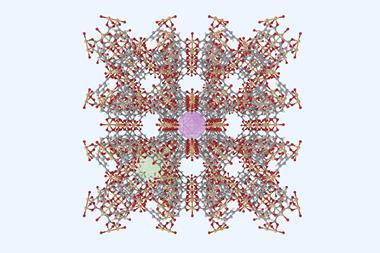
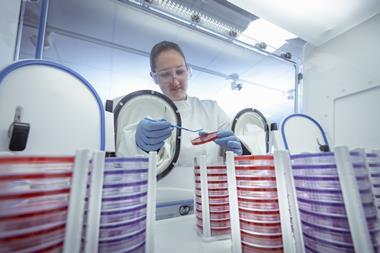

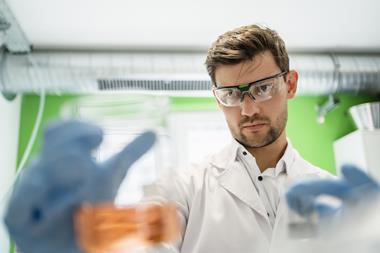


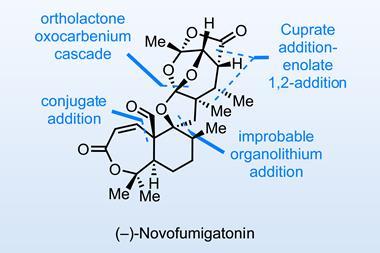
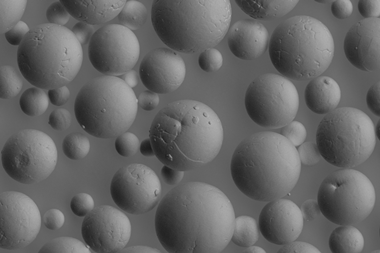
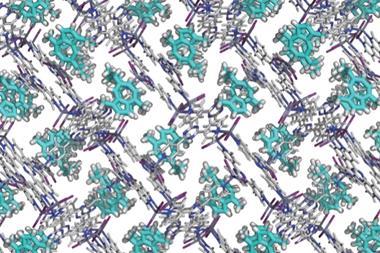
No comments yet